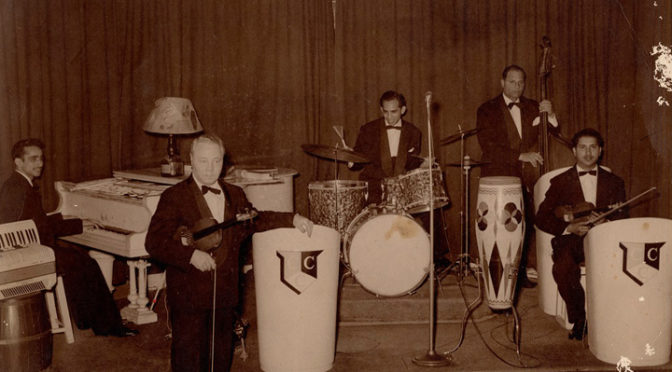The Portuguese Diaspora in Bengal: Luso-Indians and Bengali Catholics
Posted on : May 5, 2019Author : AGA Admin

Walking down Brabourne Road in Central Calcutta and struggling to keep bearing amidst the rushing porters, vendors, sales persons, and the blinding traffic, one just needs to turn left to enter a different world. It’s the Portuguese Church Street, the pavements mostly dotted with rows of colourful soft toys lined up for sale. Right behind the colour spectrum, stands the Holy Rosary Cathedral—a place she has been occupying since 1799. The Church and the Street much akin to the three Jewish Synagogues located right across the Brabourne Road in
Pollock Street, stand witness to the remarkable multicultural heritage that Calcutta was once synonymous with. The Cathedral belonging to the order of Roman Catholic Archdiocese and constructed through endowments of wealthy Baretto brothers in the mid-18 th century signifies considerable Portuguese presence and interest in the city. Like the Dutch or the British, the Portuguese historically shared a commercial connect with Calcutta though unlike the other
foreign traders, they were the first to receive a permission to trade and carry out missionary activities on the Bengal soil when in 1579 Emperor Akbar granted them the right through an official firman.
They subsequently established their first church in 1599 on the banks of river Hooghly in Bandel which came to be known as Bandel Basilica and were assumed to have carried out forceful conversion of people in the region. The initial converts were mostly Hindus and one of the most prominent converts of the period was the young prince Bhushan of Dacca who was re-christened as Dom Antonio de Rozario. He remains significant in the Portuguese
annals of Bengal for having composed the first treatise on the relationship between Hinduism and Christianity, known as Brāhman Kyāthalik Saṃbād and is also believed to have converted a substantial number of Hindus to Christianity.
Bandel, a small town of Hooghly district which witnesses an incessant traffic of modern tourists of both Christian and non-Christian persuasions who throng to visit the Bandel Basilica as also taste the unique Bandel Cheese (Johnson & Johnson in New Market beingone of the oldest stockists of this particular delicacy in Calcutta) had emerged as the epicentre of the Catholic Portuguese community of Bengal as early as the 16 th century. The Portuguese following the directives laid down by Albuquerque, the Portuguese governor of India, believed that in order to establish an unassailable bond with their homeland, there was need to convert the local inhabitants, rechristen them with Portuguese names and religion and even enter into marriage alliances with the ‘native’ Indians. Intermarriage was deemed important to establish a local support base and the ability to marry ‘natives’ was once considered to be a matter of great honour as only Portuguese men of high valour could marry Indian women of
respectable families once they embraced Christianity. It cannot be ascertained how extensively this policy was followed in the rest of Bengal, but several marriages between Portuguese and non-Portuguese Indian women did take place in Bandel. Instances of Indians being converted to Christianity by Portuguese missionaries and thus taking Portuguese names as also of Indians receiving economic sponsorships from the Portuguese and adopting
Portuguese names voluntarily, as a mark of respect for their benefactor, were common. Such processes gradually led to the growth of an indigenous Catholic community in Bengal with its nerve centre being Bandel, Hooghly.
By the 18 th century, descendants of the original Portuguese diaspora in Bengal began to enjoy a distinct presence and came to be known as the Portuguese (colloquially ferenghis/topasses). However simultaneously many native Indians who had experienced conversion by the Portuguese missionaries and given Portuguese names were also called Portuguese (colloquially known as kala ferenghis). This gave rise to a state of confusion as it became increasingly difficult to ascertain the actual inheritor of the Portuguese legacy among the “original” Portuguese descendants and those who were of Indian ancestry but also identified themselves as Portuguese. To distinguish, the descendants of the Portuguese came to be called Luso-Indians and others of Indian ancestry henceforth became known as Bengali Catholics.
Their social status and acceptance experienced further changes with the coming of the British to Hooghly and Bengal. With the subsequent development of the Anglo-Indian Community, the Luso-Indians began to be referred as Eurasians and they later lost their separate presence and merged with the Anglo-Indian Community of Bengal. One of the factors responsible for such merger and loss of separate identity of the Luso-Indians was historical. As the
Portuguese lost control over Bandel to the British, there was a steady migration of the Luso-Indians from Bandel to Calcutta, the new political capital of British India. The Luso-Indians eventually became part of the cosmopolitan matrix of contemporary Calcutta thus loosing their unique Portuguese lineage and came to be known merely as Eurasians / Anglo-Indians. One of the Portuguese luminaries of Calcutta was Henry Louis Vivian Derozio—the leading light of ‘Young Bengal’ and a path blazer who was born in modern Entally area of Calcutta in 1809 and his family name was De Rozario.
Priscilla Namrata Rozario
05-04-2019





Leave a Reply